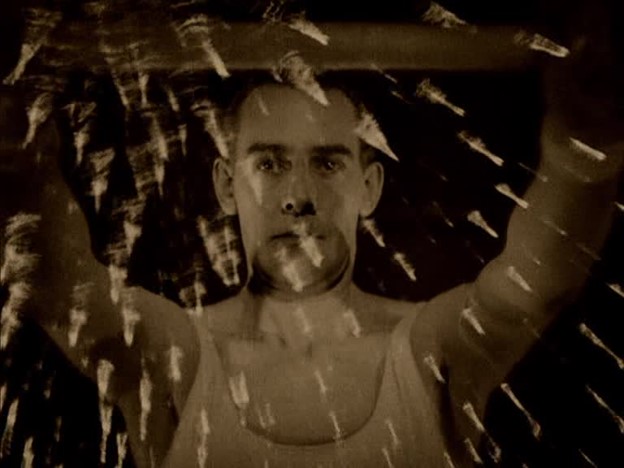Variety (1925)
Ewald Andre Dupont's "Variety"
At the height of the German Expressionist movement in the 1920s, German filmmakers were dazzling international audiences with the most creative films ever seen. One such director, Ewald Andre Dupont, created a film that enthralled audiences everywhere, including in the United States. The film, "Variety," can off-handedly be remembered as a film about trapeze artists. However, its stunning use of camerawork, cinematography, expressionism and its plot involving infidelity, lies, and murder is what makes the film a critical marvel.
"Variety" begins in a prison, where a prisoner designated "Prisoner 28" must recount how he ended up there. His name is Boss Huller, a former trapeze artist. He recounts how he left his wife and child to join a younger woman named Berta-Marie in their own trapeze show. Boss and Berta-Marie become so good that they attract the attention of a renowned trapeze artist named Artinelli who wants them to join his show. In joining, the couple gets fame and money. However, Artinelli and Berta-Marie begin an affair behind Boss's back. The affair becomes common knowledge with the variety show performers as they mock Boss behind his back. Soon, Boss finds out about the affair. One night, he contemplates letting Artinelli drop to his death while doing the trapeze performance. He becomes overwhelmed and decides not to go through with it. Then, he sneaks into Artinelli's room and kills him.
Many film historians agree that "Variety" lacks in story. It is a simple story of a family man who leaves his wife for a younger woman, fame, and fortune, only to be disappointed. The simple melodramatic structure seems to have no abstract allegory. However, it does fall in line with many films of the Weimar Republic. That is - the story of a man who loses everything.
Where "Variety" outshines other films at the time is its incredible direction and camerawork. Borrowing from F.W. Murnau's "The Last Laugh" a year prior, Dupont uses an 'unchained camera' in many scenes. Whether to move to a close-up or to capture the exciting movement of trapeze performers, Dupont's camera moves in varying directions. In borrowing editing techniques from the Soviets, Dupont is also able to edit images together to create the excitement that the carnival features are meant to illicit. To top it off, Dupont infuses visual spaces with motifs. For example, after discovering that his new young lover is cheating on him, we see a drawing of a clown on the wall behind Boss. Dupont is visually identifying Boss's shame and embarrassment at the turn his life has taken. Using these various techniques of filmmaking - expression, moving cameras, and editing - the viewers get to incorporate the mixed emotions of the story into their viewing experience. You feel the excitement of the carnival lifestyle, feel the shame and embarrassment by Boss, and then equally his rage and violence.
Despite American audiences loving the film, it was heavily censored in the United States for its obscenities. Naked women, criminal activity, and even murder were some of the obscenities faced by the American censors. Despite this, the film is renowned for its innovative combination of several filmmaking techniques that were only considered amateur at the time. Despite its melodramatic story, the viewers become enraptured in it through Dupont's masterful direction.




Comments
Post a Comment